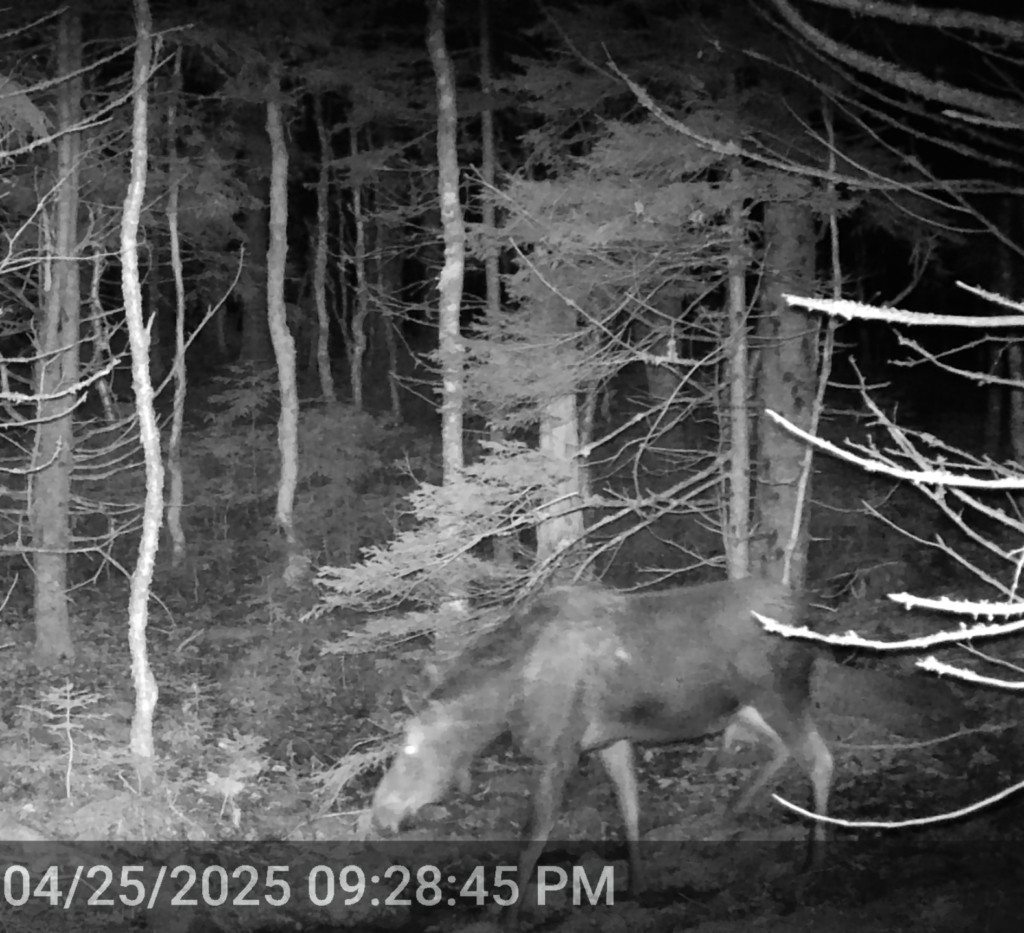The Threat
Though the mainland moose (Alces alces americana) population in Nova Scotia was officially declared endangered under the provincial Endangered Species Act in 2003, many Nova Scotians are unaware that moose on the mainland are at risk, little action has been taken to date, and the population has not recovered. An estimated 1,000 individuals make up the provincial population today—far below the provincial Recovery Plan’s target of 5,000 moose.
The mainland moose is distinct from the Cape Breton moose (Alces andersonii), a western subspecies that was introduced to the island after the native moose died out. The native moose is found in isolated pockets within the Cumberland/Colchester Highlands, intact forests from Pictou/Antigonish to Guysborough area, and the Tobeatic region. Primary threats to the mainland moose include habitat loss, fragmentation, poaching, and disease introduced by newly naturalized white-tailed deer. Though the introduced western moose in Cape Breton and native moose in New Brunswick are also negatively affected by these threats, for reasons we don’t yet understand, moose on the island and other side of the Chignecto Ismuths do not seem to respond to these threats in the extreme ways moose on the mainland do.
Since 2022, we’ve led a seasonal series of educational events across Nova Scotia sharing moose ID tips with participants and, in 2023, started collecting survey responses from Nova Scotians revealing their observations and perceptions of moose conservation issues. With the help of the Nova Scotia Habitat Conservation Fund and individual donors, we’re also monitoring volunteer-stewarded trail cameras in moose habitat. Over 2024-2026, we are building on this work by expanding our outreach to new demographics and adding additional trail cameras to our moose monitoring network, focusing on rural Halifax, Guysborough, Colchester, and Cumberland areas. New events will target hunters and anglers, recognizing their crucial role in moose conservation and as knowledge holders, and young Nova Scotians, who seem to be less aware of the conservation issues facing moose, while trail camera outreach will target rural landowners stewarding appropriate habitats.
Our Findings to Date
Over 2022 to 2024, we identified gaps in public awareness of the mainland moose, particularly among younger and urban-dwelling Nova Scotians, noted heightened concerns about poaching in the Tobeatic region and, encouragingly, found potentially greater awareness of moose conservation issues in the Cumberland/Colchester area, where there are likely more moose.
Sixty-one percent (61%) of nearly 600 survey respondents had seen a moose on mainland Nova Scotia in their lifetime with many of the sightings occurring between 10 – 20 years ago. Many respondents were confident in their ability to identify signs of moose in the landscape, such as tracks or scats. Most young Nova Scotian respondents had never seen a moose and some respondents were surprised to learn that the moose is endangered, even when they reported not seeing many in recent years.
We also confirmed our previous suspicions that many Nova Scotians are not reporting moose or signs of moose to the provincial hotline, with seventy-seven percent (77%) of survey respondents who had seen a moose saying they were not aware of the provincial hotline or that they chose not to report their sighting. In cases where knowledgeable respondents (Nova Scotians who could recognize moose sign and told us they were seeing moose) chose not to report their sightings, skepticism of provincial efforts to conserve the mainland moose or its habitat and mistrust of the Department of Natural Resources were overwhelmingly given as reasons for the respondents’ behaviour. These respondents do seem comfortable speaking with and reporting moose signs to Nature Nova Scotia staff, so we are hopeful that continued community engagement will break down these awareness- and trust-related barriers.
As for the moose reports themselves, we are so excited to now steward a growing database of confirmed moose sightings! Our trail camera volunteers spotted their first moose earlier in 2025 and we continue to hear reports from Nova Scotians across the mainland. We are sharing our data with the province and report regularly to the Habitat Conservation Fund representatives and our own donors.
Help Us Engage More Nova Scotians in Monitoring
We hope to reach 100 trail cameras deployed and have secured 1,000 survey responses by the end of March 2026. Between the sighting reports Nova Scotians continue to share with us and our growing trail camera network, we are well poised to fill those population data gaps outlined in the updated Mainland Moose Recovery Plan. You can help us keep the work going by donating to our Species At Risk Fund.

